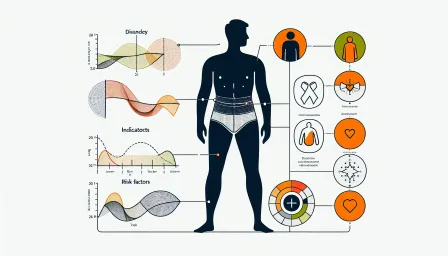The Ultimate Guide to Strength Training for Men: Tips and Techniques

Discover comprehensive strength training tips and techniques for men. This ultimate guide covers everything from the basics to advanced workouts to help you build muscle and strength.
Introduction
Strength training is a crucial component of any fitness regimen, especially for men looking to build muscle, enhance performance, and improve overall health. But with myriad techniques and training philosophies available, it can be challenging to know where to start. This ultimate guide aims to provide you with the foundational knowledge and actionable techniques to make the most out of your strength training for men.
Why Strength Training? Benefits and Objectives
Strength training offers numerous benefits that go beyond just building muscle. These include:
- Increased muscle mass and strength
- Enhanced metabolic rate
- Improved bone density
- Better mental health and reduced stress
- Improved body composition
Whether your goal is to bulk up, enhance athletic performance, or improve your health, strength training can help you achieve these objectives effectively.
Getting Started with Strength Training for Men
Assess Your Fitness Level
Before diving into strength training, it’s vital to assess your current fitness level. This involves understanding your strengths and weaknesses and identifying any potential injuries or imbalances. Consider consulting with a fitness professional for a comprehensive fitness assessment.
Establish Your Goals
Set clear, achievable goals before you begin. Are you looking to gain muscle mass, increase strength, or enhance overall fitness? Having well-defined goals will inform the design of your workout program.
Essential Principles of Strength Training
Progressive Overload
Progressive overload is a fundamental principle in strength training. It involves gradually increasing the weight, frequency, or number of repetitions in your workouts to continually challenge your muscles and promote growth and strength.
Consistency
Consistency is key to any strength training program. Regular workouts, proper nutrition, and adequate rest will collectively contribute to long-term success. Skipping workouts or inconsistency can hinder progress and increase the risk of injury.
Rest and Recovery
Rest and recovery are as crucial as the workouts themselves. Muscles grow and repair during rest periods. Ensure you get adequate sleep and include rest days in your training schedule to avoid overtraining and injuries.
Designing Your Strength Training Program
Types of Exercises
Incorporate a variety of exercises targeting different muscle groups:
- Compound exercises (e.g., squats, deadlifts, bench press) work multiple muscle groups and are highly effective for building overall strength.
- Isolation exercises (e.g., bicep curls, tricep extensions) target specific muscles and are beneficial for correcting muscular imbalances.
Training Split
A training split refers to how you divide your workouts throughout the week:
- Full-body workouts: Ideal for beginners, involving exercises that target all major muscle groups in each session.
- Upper/lower split: Alternates between upper- and lower-body exercises on different days.
- Push/pull/legs: A more advanced split focusing on push exercises (chest, shoulders, triceps), pull exercises (back, biceps), and leg exercises on separate days.
Reps and Sets
The number of repetitions (reps) and sets depends on your goals:
- Strength: 3-6 reps for 3-5 sets
- Hypertrophy: 6-12 reps for 3-4 sets
- Endurance: 12-20 reps for 2-3 sets
Nutrition for Strength Training
Nutrition plays a pivotal role in achieving your strength training objectives. Focus on the following:
Macronutrients
- Protein: Essential for muscle repair and growth. Aim for 1.2-2.2 grams of protein per kilogram of body weight.
- Carbohydrates: Provide energy for your workouts. Include complex carbs like oats, brown rice, and sweet potatoes.
- Fats: Important for hormone production and overall health. Include healthy fats from sources such as avocados, nuts, and olive oil.
Hydration
Stay hydrated to support muscle function and overall performance. Aim to drink at least 8-10 glasses of water a day and more if you’re sweating heavily during workouts.
Common Strength Training Mistakes and How to Avoid Them
Poor Form
Using improper form can lead to injuries and limit your progress. Focus on learning the correct form for each exercise, possibly under the supervision of a fitness professional.
Neglecting Warm-Up and Cool-Down
Skipping warm-ups or cool-downs can increase the risk of injuries and delay recovery. Include dynamic stretches in your warm-up and static stretches in your cool-down.
Overtraining
Excessive training without adequate rest can lead to burnout and injuries. Ensure you have rest days and listen to your body’s signals.
Advanced Strength Training Techniques
Pyramid Training
This method involves gradually increasing the weight and decreasing the reps with each set. It’s effective for building both strength and muscle mass.
Supersets
Perform two exercises back-to-back with no rest in between. This technique saves time and increases workout intensity.
Drop Sets
After reaching failure with a set, reduce the weight and continue for more reps. Drop sets are excellent for hypertrophy and muscle endurance.
Conclusion
Strength training for men is a powerful tool for building muscle, enhancing performance, and improving overall health. By understanding the fundamental principles, designing a tailored workout program, focusing on nutrition, and avoiding common pitfalls, you can maximize your results. Remember, consistency and dedication are key. Happy lifting!



























